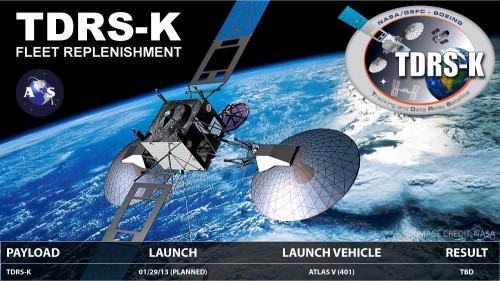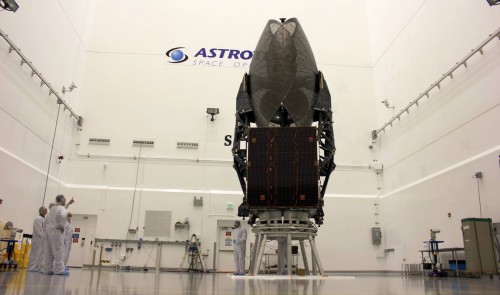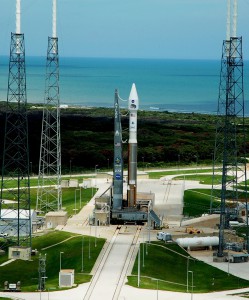Sent from my iPad
Begin forwarded message:
From: Kent Castle <kent.d.castle@hotmail.com>
Date: January 25, 2013 3:06:53 PM GMT-06:00
To: Martin Bobby <bobbygmartin1938@gmail.com>, Grant Berl <berlgrant@frontier.com>, Bentz Jerry <bentz@sbcglobal.net>, Baird Darren <darren.t.baird@nasa.gov>, Choban Peter <peter.s.choban@aero.org>, Carman Gilbert <gil77546@sbcglobal.net>
Subject: FW: Suspect part prompts delay of Atlas V rocket launch from Cape
From:Subject: FW: Suspect part prompts delay of Atlas V rocket launch from Cape
Date: Thu, 24 Jan 2013 21:15:07 -0600
Jan. 23, 2013 10:41 PM
Suspect part prompts delay of Atlas V rocket launch from Cape
Written by
James Dean
FLORIDA TODAY
A look at satellite to be launched on Jan. 30: A look at the TDRS-K Satellite that will launch from Cape Canaveral Air Force Station at 8:52 p.m. on Jan. 30. By Malcolm Denemark and Tim Walters Posted Jan. 11, 2013
Contact Dean at 321-242-3668 or jdean@floridatoday.com.The Space Coast's first launch of 2013 has been pushed back a day so technicians can replace a faulty rocket component.
Liftoff of a next-generation NASA communications satellite from Cape Canaveral Air Force Station is now targeted for 8:48 p.m. next Wednesday, at the opening of a 40-minute launch window.
NASA said United Launch Alliance needed time to swap out a small box on the first stage of an Atlas V rocket that is responsible for sending signals to explosive devices used to separate the booster from the rocket's Centaur upper stage.
The Ordnance Remote Control Assembly produced unacceptable signals during tests before connections were made to the explosives.
ULA planned to fly in a new box from its manufacturing facility in Decatur, Ala., then install and test the device in the rocket's vertical processing tower at Launch Complex 41.
Additional preparations to launch NASA's next Tracking and Data Relay Satellite, called TDRS-K, continue with a Flight Readiness Review today and a countdown rehearsal Friday. A Launch Readiness Review follows Monday morning.
The 192-foot rocket and spacecraft are expected to roll a short distance to the launch pad around 10 a.m. Tuesday.
NASA's constellation of TDRS satellites allow near continuous communication between the ground and spacecraft flying in low Earth orbit, including the International Space Station and Hubble Space Telescope.
The new satellite is the first of three in an upgraded batch built by The Boeing Co. NASA says the first two missions, plus related modifications to ground networks, will cost $715 million.
Copyright © 2013 www.floridatoday.com. All rights reserved.
===============================================================
AmericaSpace
For a nation that explores
January 24th, 2013
Ordnance Issue Prompts Delay of TDRS-K Satellite Launch
By Ben Evans
Not for nothing is TDRS-K's objective described as "Fleet Replenishment." This satellite is the first of its kind to be launched in more than a decade and will support voice and data communications traffic between the ground and low-Earth orbit until the middle of the next decade. Image Credit: AmericaSpace/Nathan MoellerThe launch of NASA's eleventh Tracking and Data Relay Satellite—known as "TDRS-K"—has received a 24-hour launch postponement, to enable United Launch Alliance technicians additional time to replace a critical piece of ordnance equipment. Previously scheduled to rise from Cape Canaveral Air Force Station's Space Launch Complex (SLC)-41 on the evening of 29 January, TDRS-K will now fly no sooner than 8:48 pm EST on the 30th.
The decision to delay the launch was announced by ULA yesterday and centers on a glitch with an Ordnance Remote Control Assembly (ORCA), which displayed "an anomalous signal indication before planned ordnance connections." This is the only problem of note to affect what has otherwise been an exceptionally smooth processing flow. The hardware for ULA's 19-story Atlas V booster—which will fly in its "401″ configuration, with a four-meter-wide (13-foot) payload fairing, no strap-on solid-fueled rockets and a single-engine Centaur upper stage—was declared ready for flight at the start of December and stacking of its components began earlier this month. The "core" segment of the Atlas was hoisted into position in the Vertical Integration Facility (VIF) on 3 January and was followed by the attachment of the Centaur upper stage over the weekend of the 5th/6th.
Concurrently, the TDRS-K satellite arrived at the Kennedy Space Center on 18 December, aboard an Air Force C-17 Globemaster III aircraft from prime contractor Boeing's Space & Intelligence Systems assembly facility in El Segundo, Calif. Following its removal from the aircraft, the satellite—which represents the first in a new "third generation" of its kind, capable of supporting space-to-ground communications and data-relay from the International Space Station, the Hubble Space Telescope, and over 20 other users—was transferred to Astrotech's payload processing station, near the Kennedy Space Center. Over the Christmas period, it underwent electrical testing, and in early January its attitude-control system was fuelled, its batteries were charged, and on the 14th it was installed onto its Atlas V payload adapter. Two days later, TDRS-K was encapsulated within its protective shroud, and on the 20th the complete payload was mounted atop the Atlas V in the VIF.
Pictured during final processing in Astrotech's payload processing facility, TDRS-K will augment NASA's Tracking and Data Relay Satellite network through the middle of the next decade. Photo Credit: Jason RhianYesterday's announcement of a launch delay will effectively push back a number of the final pre-flight milestones. The standard Launch Readiness Review will now occur on 28 January, followed by the rollout of the Atlas V/TDRS-K stack from the VIF to SLC-41 at dawn the next day. Liftoff on the 30th is slated to occur at the start of a 40-minute "window," which opens at 8:48 pm EST. Two-and-a-half seconds before liftoff, the first stage's Russian-built RD-180 engine will roar to life, reaching its full 860,000 pounds of thrust at T-zero, and climb-out from SLC-41 will commence at T+1.1 seconds. This engine is fed by liquid oxygen and a rocket-grade form of kerosene, known as "RP-1," and is scheduled to burn for a little over four minutes. Shortly after clearing the tower, the Atlas will execute a combined pitch, roll, and yaw program maneuver, which will position it onto the proper flight azimuth for the insertion of TDRS-K into orbit. Eighty-three seconds into the flight, with the RD-180 still burning hot and hard, the vehicle will burst through the sound barrier. At around this time, the maximum aerodynamic stresses are felt through the Atlas' airframe.
NASA's TDRS-K satellite will be launched atop a United Launch Alliance Atlas V 401 rocket. Photo Credit: Jason RhianSlightly ahead of engine cut-off, the RD-180 will throttle back to limit acceleration loads and, after separation, the turn will come of the Centaur upper stage. The latter will insert TDRS-K into its required transfer orbit. One hour and 46 minutes after launch, the giant satellite will be released from its payload shroud, and shortly thereafter the deployment of its solar arrays and communications appendages will commence.
TDRS-K represents the first such satellite to be launched in more than a decade. Between April 1983 and July 1995, seven "first-generation" TDRSes were launched by the Shuttle—one of which was lost in the Challenger tragedy—and a three-member "second-generation" series was boosted into orbit by Atlas II expendable rockets between June 2000 and December 2002. NASA has announced its intention to retire the remaining operational members of the first generation by 2015, making the arrival of the uprated third generation important in providing near-continuous communications and data-relay support for the remainder of this decade and throughout the next.
In the words of Craig Cooning, vice president and general manager of Boeing Space & Intelligence Systems, TDRS-K is a "step toward improving how high-resolution images, video, voice, and data are transmitted." The third generation will comprise three satellites, of which TDRS-K is the first. Two others, TDRS-L and TDRS-M, are tentatively scheduled for launch in January 2014 and December 2015, respectively. AmericaSpace will be covering next week's launch of TDRS-K and a full mission preview will appear this coming weekend.
Copyright © 2013 AmericaSpace - All Rights Reserved
===============================================================





No comments:
Post a Comment